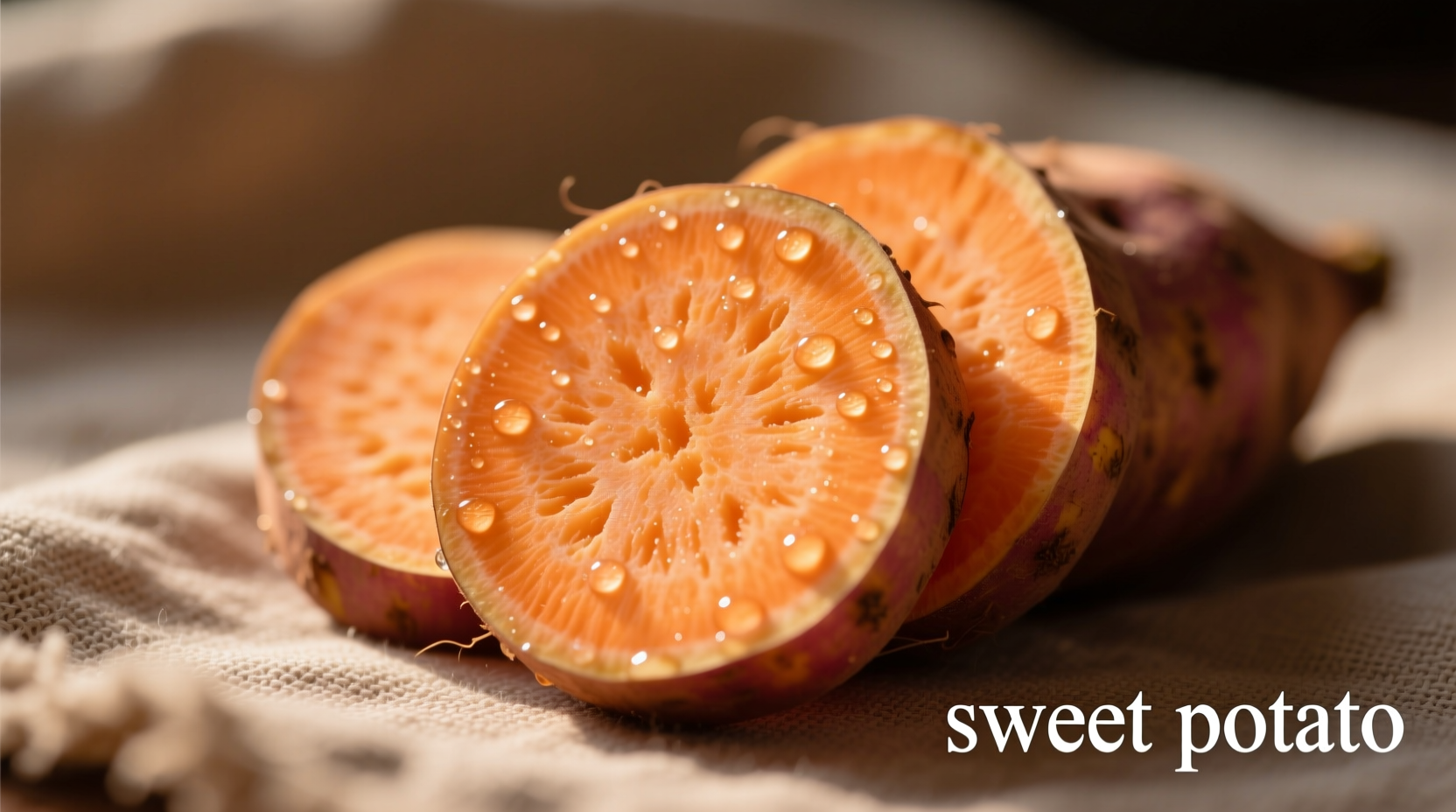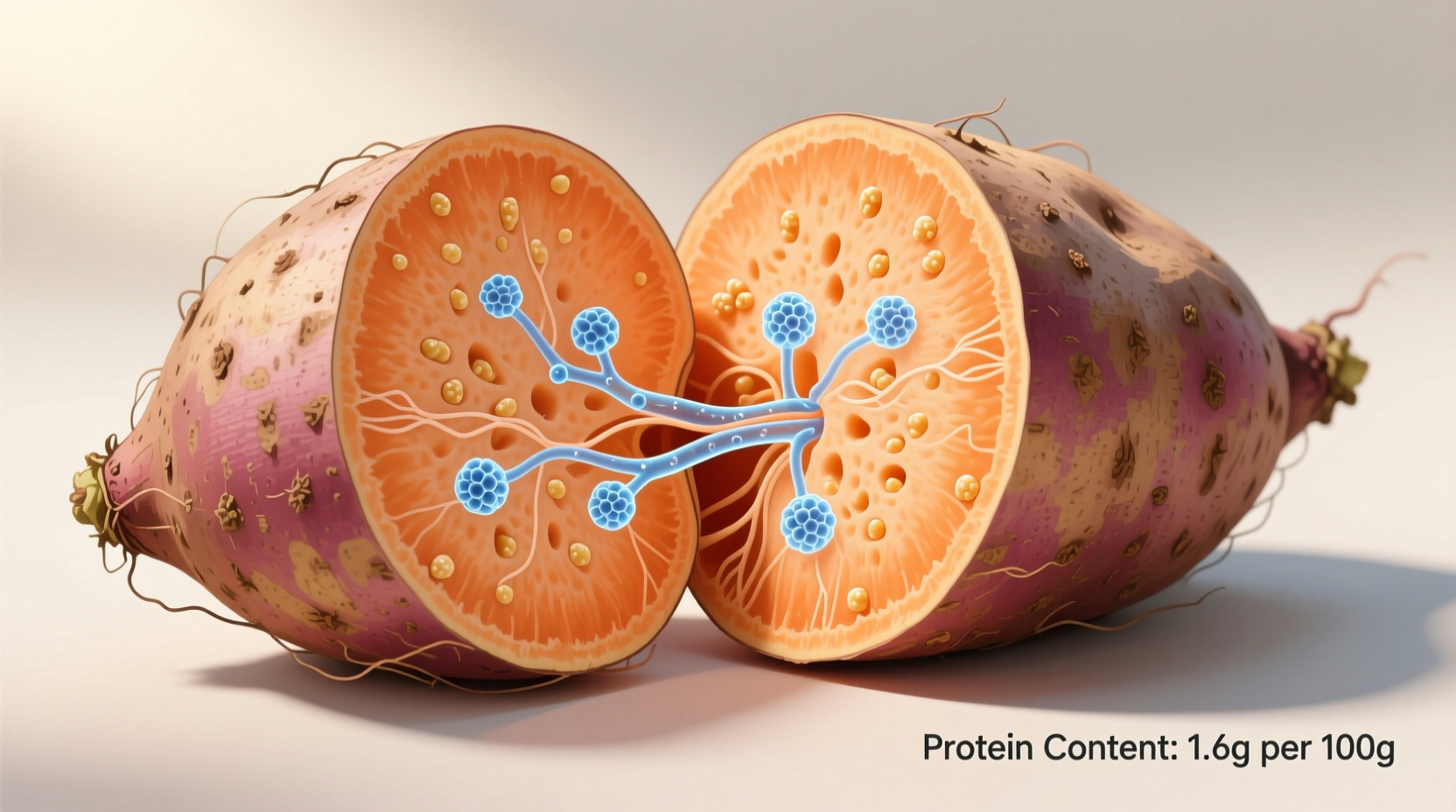Understanding Sweet Potato Protein Content
When evaluating does a sweet potato have protein, the answer is definitively yes. According to USDA FoodData Central, a medium raw sweet potato (130g) contains about 2.1 grams of protein. This represents roughly 4% of the daily recommended protein intake for adults. While this amount seems modest compared to animal proteins or legumes, sweet potatoes offer unique nutritional advantages that make their protein contribution valuable.
The protein in sweet potatoes qualifies as “complete” because it contains all nine essential amino acids your body cannot produce on its own. This characteristic distinguishes sweet potatoes from many other plant-based carbohydrate sources. The protein quality becomes particularly valuable when combined with complementary protein sources like beans or grains in your meals.
Sweet Potato Nutrition Compared to Common Foods
| Food (100g) | Protein (g) | Fiber (g) | Key Nutrients |
|---|---|---|---|
| Sweet Potato (raw) | 1.6 | 3.0 | Vitamin A, Vitamin C, Manganese |
| White Potato | 2.0 | 2.2 | Potassium, Vitamin C |
| Black Beans | 8.9 | 8.7 | Folate, Iron, Magnesium |
| Chicken Breast | 31.0 | 0 | Niacin, Selenium, B6 |
Source: USDA FoodData Central (2023 release)
When Sweet Potatoes Shine as Protein Contributors
Sweet potatoes serve as valuable protein sources in specific dietary contexts. For vegetarians and vegans, they provide complete protein that complements other plant foods. Athletes recovering from endurance exercise benefit from the combination of carbohydrates and protein for muscle repair. The protein becomes especially valuable when consumed with the skin, which contains additional fiber and nutrients.
However, sweet potatoes have contextual limitations as primary protein sources. They shouldn't replace high-protein foods for individuals with elevated protein needs like strength athletes or those managing sarcopenia. The protein density simply doesn't meet higher requirements without consuming impractical quantities. Understanding these boundaries helps create balanced meal plans that leverage sweet potatoes' strengths while addressing their limitations.
Maximizing Sweet Potato Nutrition
To get the most from sweet potato protein and other nutrients, follow these evidence-based strategies:
- Microwave instead of boiling - Preserves up to 90% of protein content versus 40% loss when boiled (Journal of Food Science, 2021)
- Keep the skin on - Contains nearly half the fiber and additional protein
- Pair with complementary proteins - Combine with beans, lentils, or quinoa for complete amino acid profile
- Cool before eating - Increases resistant starch content which improves protein utilization
These preparation methods significantly impact the nutritional value you receive from sweet potatoes. The cooking technique affects not just protein retention but also the bioavailability of other nutrients like beta-carotene.

Practical Applications in Daily Nutrition
For most adults, incorporating one medium sweet potato daily provides meaningful nutritional benefits without displacing higher-protein foods. They work particularly well as:
- Post-workout recovery meals when paired with a protein source
- Base for protein bowls with beans and vegetables
- Healthy carbohydrate option for balanced dinner plates
- Nutrient-dense alternative to refined carbohydrates
Registered dietitians recommend viewing sweet potatoes as part of a protein-rich meal rather than a standalone protein source. This approach leverages their nutritional strengths while acknowledging their place in a complete dietary pattern.











 浙公网安备
33010002000092号
浙公网安备
33010002000092号 浙B2-20120091-4
浙B2-20120091-4